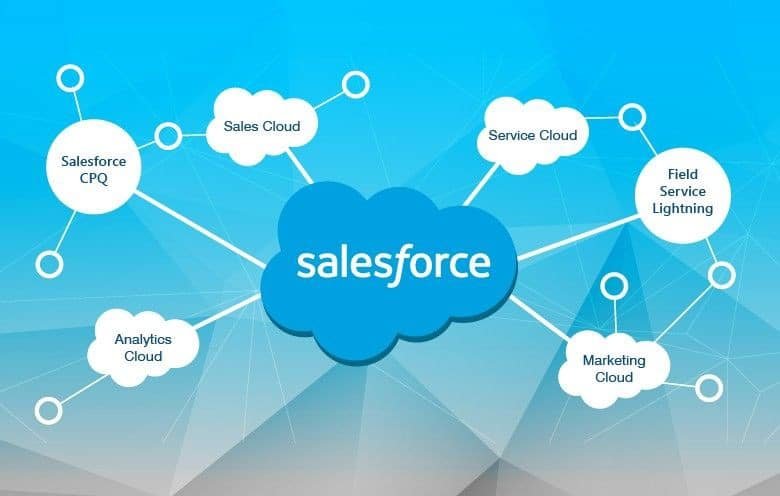If you are into the Salesforce domain or an aspiring Salesforce professional then there are good chances that you might have come across the words Salesforce CMS. Well, Salesforce CMS is a content management system (CMS) developed by Salesforce, a cloud-based customer relationship management (CRM) software company.
It is designed to help organizations manage and deliver content across multiple channels, such as websites, mobile applications, and social media platforms. The Salesforce CMS allows users to create, edit, and publish content within a centralized platform, and it also provides tools for managing content workflows and permissions.

It allows users to create, edit, and publish content within a centralized platform, and it also provides tools for managing content workflows and permissions.
What are its uses
The CMS has a wide range of uses, from managing website content to streamlining content workflows for marketing campaigns. Here are some of the main ways that organizations can use Salesforce CMS:
- Content creation and management: It allows organizations to create and manage digital content, such as website pages, product information, and marketing materials. Users can create content within the CMS, import content from external sources, and manage content across multiple channels.
- Multi-channel content delivery: The CMS allows organizations to deliver content across multiple channels, such as websites, mobile apps, and social media platforms. It provides a single source of truth for all content, ensuring that content is consistent across all channels.
- Personalization: It allows organizations to personalize content based on customer preferences and behavior. This can help improve customer engagement and drive conversions.
- Collaboration and workflow management: Salesforce provides tools for collaboration and workflow management, allowing teams to work together more efficiently. Users can assign tasks, track progress, and set up approval workflows to ensure that content is delivered on time and to the right people.
- Integration with other Salesforce products: Salesforce can be integrated with other Salesforce products, such as Salesforce Marketing Cloud and Commerce Cloud, as well as with external systems. This allows organizations to leverage existing data and systems to improve their content management and delivery.
- Content analytics: Salesforce provides analytics to help organizations understand how their content is performing. Users can track metrics such as page views, time on page, and conversion rates, and use this data to optimize their content strategy.
Pricing Plans
Salesforce CMS is a component of the larger Salesforce platform, and its pricing depends on the specific Salesforce edition and plans that an organization chooses. Here are the pricing plans for Salesforce CMS:
- It is also included as part of the Salesforce Experience Cloud, which has different pricing tiers based on the number of users and features required. The pricing starts at $25 per user per month for the Experience Cloud Starter edition and goes up to $300 per user per month for the Experience Cloud Plus edition.
- The CMS is available as an add-on to the Salesforce Marketing Cloud, which has different pricing tiers based on the number of contacts and features required. The pricing starts at $400 per month for the Marketing Cloud Basic edition and goes up to $3,200 per month for the Marketing Cloud Pro edition.
It’s important to note that these prices are subject to change and may vary based on the specific needs and requirements of an organization. Additionally, there may be additional fees for implementation, training, and support, depending on the complexity of the deployment. Organizations should consult with Salesforce sales representatives to determine the best pricing plan for their specific use case.
Courses that you can do to become a Salesforce developer
To become a Salesforce CMS developer, you’ll need a good understanding of Salesforce platform fundamentals, as well as experience with web development and content management systems. Here are some courses and resources that can help you get started:
- Salesforce Trailhead: This is an online learning platform provided by Salesforce that offers free courses and tutorials on a wide range of topics, including Salesforce CMS. There are a number of trails and modules that cover different aspects of Salesforce CMS development, such as “Create a Salesforce CMS Collection,” “Build a Salesforce CMS-Powered Website,” and “Publish Content with Salesforce CMS.”
- Salesforce Certification: Salesforce offers a number of certifications for developers, including the Salesforce Certified Platform Developer I and II. While these certifications cover a broader range of topics than just Salesforce CMS, they can be valuable credentials to have when seeking employment as a Salesforce developer.
- Salesforce Developer Community: The Salesforce Developer Community is a great resource for learning about Salesforce CMS development. There are forums where you can ask questions and get answers from other developers, as well as blog posts, tutorials, and other resources that can help you stay up to date on the latest developments in Salesforce CMS development.
Overall, becoming a Salesforce CMS developer requires a mix of technical knowledge and practical experience. By taking courses, earning certifications, and participating in the Salesforce community, you can develop the skills you need to succeed in this field.




